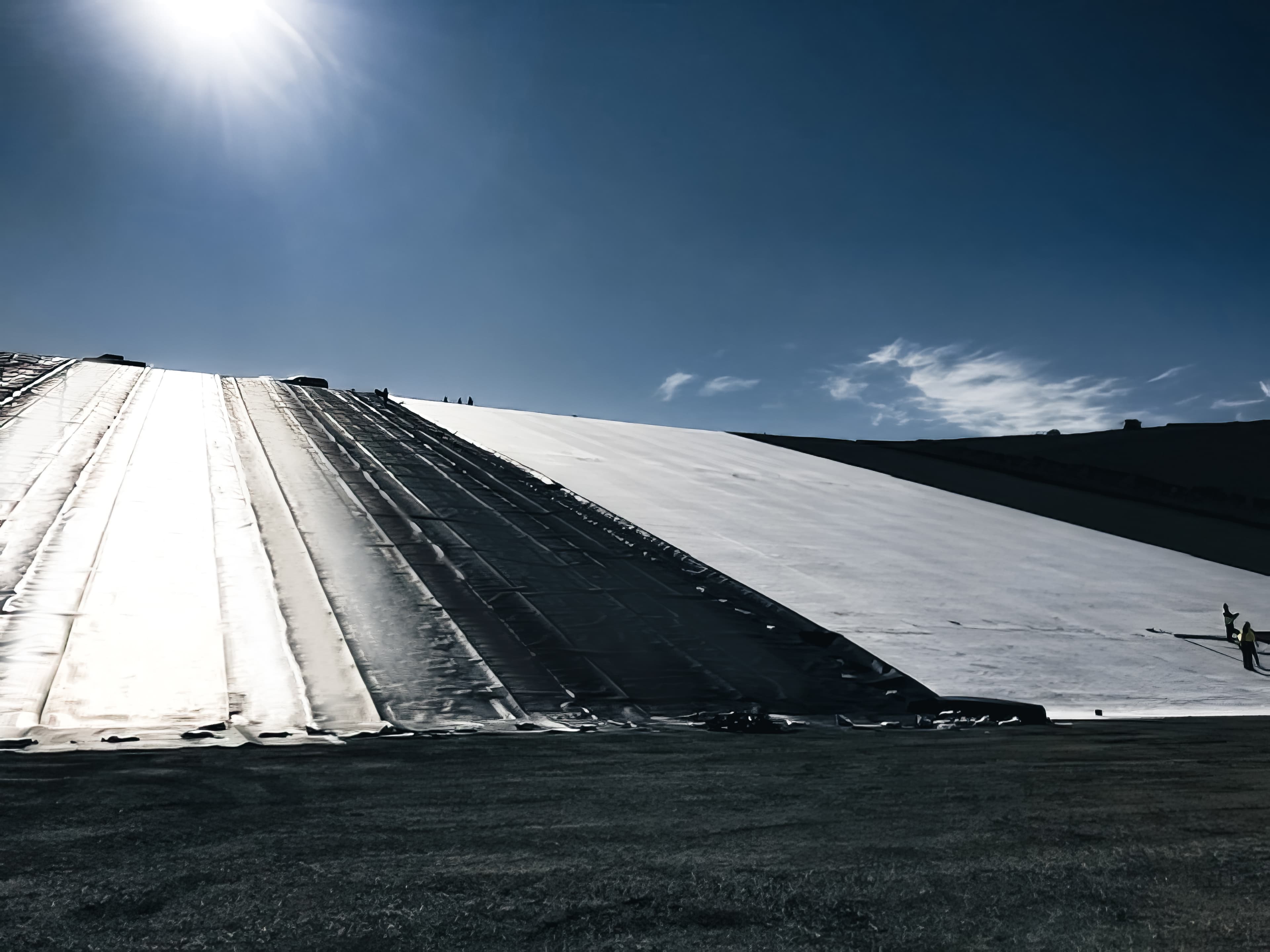
Do geosynthetic clay liners require prehydration?
Geosynthetic Clay Liners (GCL) are engineered composite materials widely used in various environmental applications, such as landfill liners and in hydraulics and mining. A typical GCL is comprised of three layers: an upper nonwoven fabric, a bentonite clay core, and a lower layer that may be woven or scrim-reinforced nonwoven. The bentonite used, often sodium bentonite, is known for its remarkable ability to swell to more than ten times its original volume upon contact with water, forming an extremely low permeability barrier of around 5^-11 m/s (1.8x10^-4 in/s). This characteristic is central to the effectiveness of GCLs in their applications, raising the question of whether prehydration of GCL is necessary to ensure its performance.
Hydration characteristics of GCLs
In Effects of partial wetting on the performance of the bentonite component of a geosynthetic clay liner, Daniel et al. (1993) have shown that GCLs possess a high capacity for moisture absorption, particularly those based on sodium bentonite clay. These studies found that under various conditions, from extremely dry soils to those conducive to lush vegetation, GCLs can achieve hydration levels ranging from 50% to 200%. Specifically, in sandy soils with a mere 5% water content, GCLs reached full hydration within 20 days. This ability to absorb moisture from the surrounding environment suggests that in many situations, particularly when installed directly over soil, GCLs do not require prehydration. The exception to this rule is in cases of extremely dry conditions where soil suction exceeds 15 bars.
Further investigation shown in, Laboratory investigation of GCL hydration from clayey sand subsoil by Anderson et al. (2012) into the hydration process from clayey sand subsoil underlined the influence of initial moisture content and the manufacturing process on GCL hydration. Their findings also highlighted the impact of thermal cycles on hydration, which only reached about 30% of its potential compared to hydration under stable room temperatures. This research underscores the importance of timely soil covering to aid hydration, especially in landfill applications.
When prehydration becomes necessary
Despite the natural hydrating capability of GCLs, certain conditions necessitate prehydration. Daniel et al. (1993) indicated that GCLs with lower hydration levels exhibit significantly higher permeability when exposed to hydrocarbons, making prehydration advantageous in scenarios where GCL is in direct contact with such substances. The research emphasized that fully hydrated GCLs demonstrate drastically lower permeability, an essential feature for containing hydrocarbons effectively, with a shift from an order of magnitude of 10^-7 m/s (3.6x10^-3 in/s) to 10^-11 m/s (3.6x10^-4 in/s) depending on the water content.
Additional studies, like those by Petrov and Rowe (1997), have explored the effects of prehydration in the presence of salt solutions and synthetic leachate, revealing that prehydration could be particularly beneficial when GCLs are exposed to highly concentrated solutions. These findings are consistent across various studies, including work by Shackelford et al. (2000), which further supports the advantage of prehydration in reducing bentonite permeability when exposed to challenging conditions such as mine tailings and high cation solutions. In any case the influence of vertical effective stress on the hydraulic conductivity of GCLs should not be neglected. Hydration should not start before the GCL has been covered and protected. Small or no compressive stress will increase porosity and hydraulic conductivity and decrease the efficiency of a GCL.
Conclusion
The consensus from various research efforts is clear: while GCLs are highly effective at absorbing moisture from their surroundings, prehydration is advantageous under certain conditions. This is particularly true in applications involving direct contact with hydrocarbons, high cation solutions, or when installed in extremely dry environments. Ensuring optimal hydration levels before exposure to such conditions can significantly enhance the performance of GCLs, maintaining their low permeability of around 5^-11 m/s (1.8x10^-4 in/s) and ensuring their effectiveness as part of a composite lining system.
Explore more blogs
View allHow durable are GEOTUBE units in engineering projects?
What are the key considerations in designing reinforced soil slopes?
A technical overview of reinforced soil slopes (RSS) in geotechnical engineering, focusing on design, erosion control, and innovative materials for slope stability.